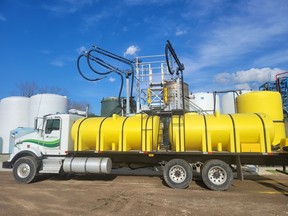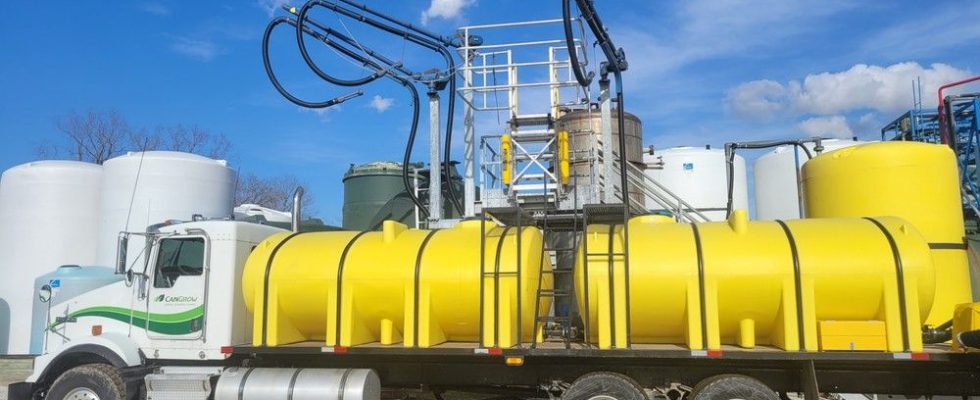
Adding microbials like bacteria and fungi mixes to fertilizer is helping farmers reduce the amount needed for crops, says a director with an Alvinston fertilizer company.
“It helps make the liquid fertilizer part of the business more efficient, run better, helps growers get more yield, reduce cost and make more money,” said Shawn Brenneman with CanGrow Crop Solutions.
The business founded in 1986 is one of several environmental innovation grant recipients through the province’s Fertilizer Challenge, Lambton-Kent-Middlesex MPP Monte McNaughton announced this week.
The challenge is aimed at “supply chain issues that are causing fertilizer shortages by investing in 10 new and innovative projects,” a March press release from the Ministry of Agriculture, Food and Rural Affairs says.
In 2021, Ontario farmers spent more than $1.2 billion on commercial fertilizers and lime, applied to more than 6.8 million acres (2.75 million hectares) of farmland, government officials noted in the release.
CanGrow, BioLine Corporation — another Alvinston corporation — and Haggerty AgRobotics from Bothwell each received $200,000, officials said.
For CanGrow, the money allows the employer of about 30 register its product in Canada and market it, Brenneman said.

“Biologicals are a new industry for the most part, so a lot of growers are just unaware of the benefits and the options available to them,” he said.
Microbials, supplied from Biodyne USA in Indiana, are added to CanGrow’s fertilizer along with a “food trail” or sugar source so the microbes can survive when they’re put on the field, Brenneman said.
The microbials then do things like help release nutrients from the soil, or pull nitrogen out of the atmosphere, he said.
“The nice thing about biologicals, because they are renewable, you put a little out in the field and they’re going to continue to multiply and multiply,” he said.
“And as they multiply, the benefits we’re trying to get, whether it be nitrogen, phosphorous, those magnify and multiply as well.”
That “regenerative” process helps with soil recovery from tilling, using chemicals, compaction and other things that come with farming, Brenneman said.
“Hopefully reestablish that plant to soil connection that we’re looking for.”
As far as a fertilizer shortage, there was a scare in 2022 because of the war in Ukraine and countries not wanting to buy from Russia, Brenneman said.
“The rest of the suppliers in the world basically were able to fill the need and demand.”
But there remain concerns about too much fertilizer use because of things such as the limited supplies of phosphate, he said, and the amount of nitrous oxide in the atmosphere contributing to climate change.
Things like biologicals are a way to better sustainability, Brenneman said.
“We want to make sure we’re applying fertilizers in the most efficient, best way possible.”

Comments
Postmedia is committed to maintaining a lively but civil forum for discussion and encourages all readers to share their views on our articles. Comments may take up to an hour for moderation before appearing on the site. We ask you to keep your comments relevant and respectful. We have enabled email notifications—you will now receive an email if you receive a reply to your comment, there is an update to a comment thread you follow or if a user you follow comments. Visit our Community Guidelines for more information and details on how to adjust your email settings.
Join the Conversation